
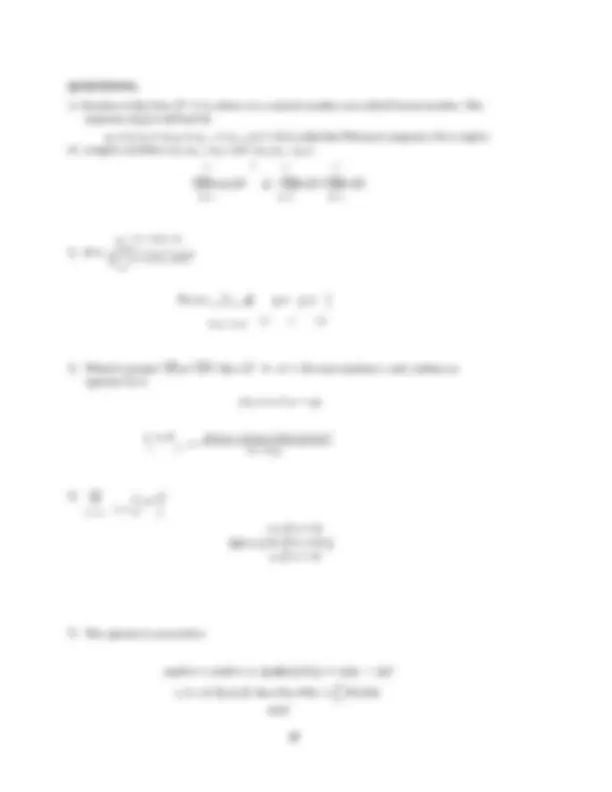

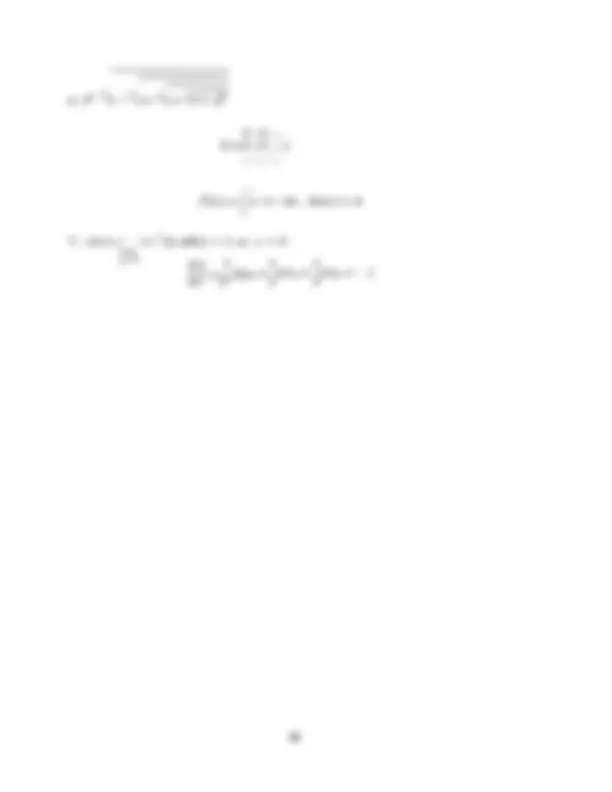
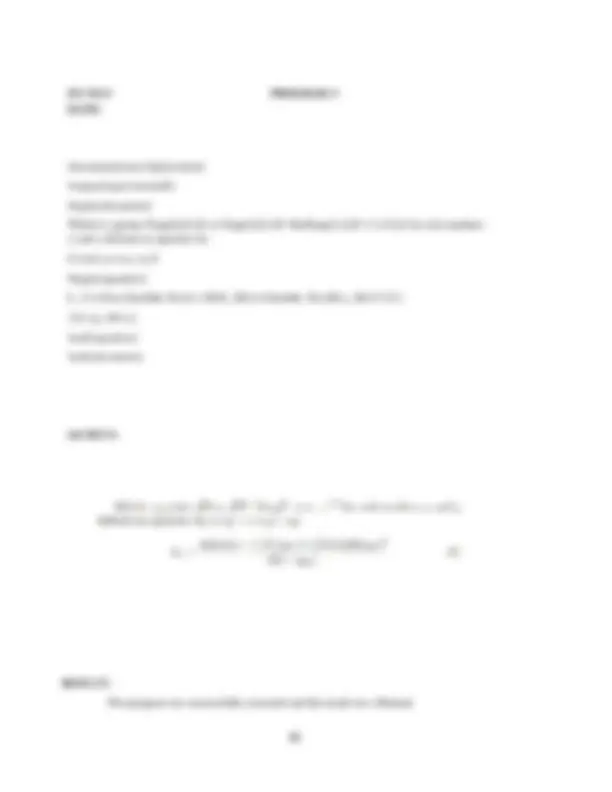
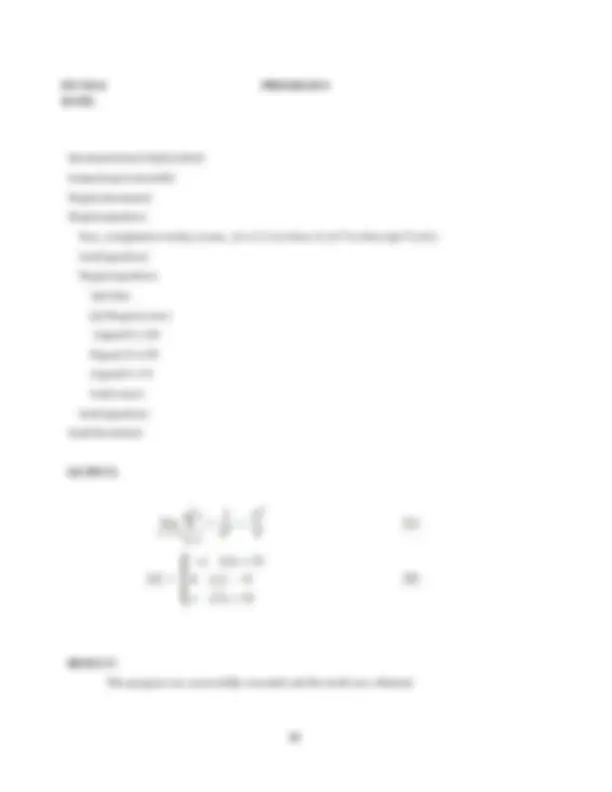
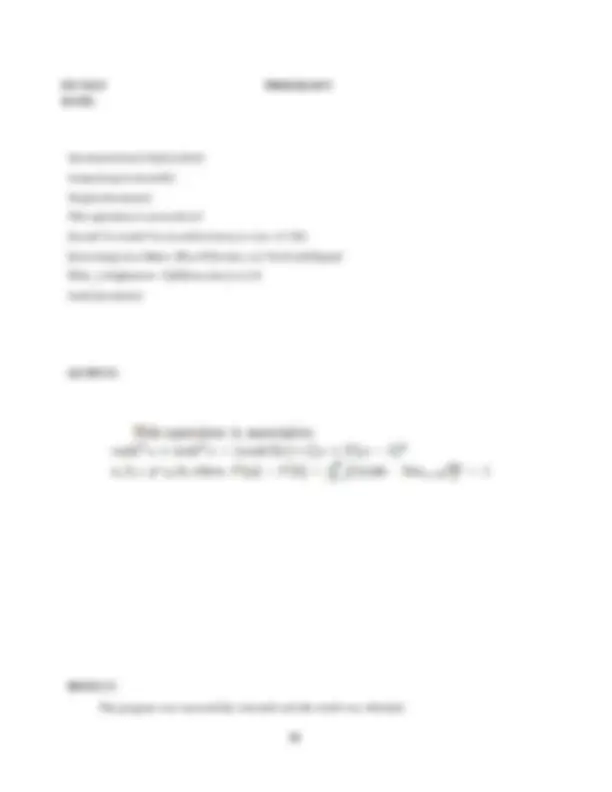


Study with the several resources on Docsity

Earn points by helping other students or get them with a premium plan


Prepare for your exams
Study with the several resources on Docsity

Earn points to download
Earn points by helping other students or get them with a premium plan
Community
Ask the community for help and clear up your study doubts
Discover the best universities in your country according to Docsity users
Free resources
Download our free guides on studying techniques, anxiety management strategies, and thesis advice from Docsity tutors
A comprehensive introduction to latex, a powerful typesetting system used for creating professional-looking documents. It covers the history and evolution of latex, its advantages and disadvantages, and the key differences between tex and latex. The document also includes several mathematical equations and formulas, showcasing latex's capabilities in typesetting complex mathematical content. With its detailed explanations and examples, this document serves as a valuable resource for anyone interested in learning about the fundamentals of latex and its applications in various academic and professional settings.
Typology: Papers
1 / 12

This page cannot be seen from the preview
Don't miss anything!







Latex is software to typeset document professional looking preparation system for
producing processor. It is particularly suited to produce long structured document and is very
good at typesetting equations.
It is available as free software for most operating system and also useful to produce
slides for a slideshow. It is specifically designed to produce pleasing documents such as
technical and general articles, books, reports and even letters.
Latex is based on Tex, a typesetting system designed by “Donald E. Knuth”
the famous professor of computer science at Stanford University. In 1978, for high quality
digital typesetting. Tex was latter improved upon by “Lampot”. It is a low-level language
but computers can with it, most people could find it to use. So, Latex has been developed to
make it easier,
The current version of latex is 2e. Latex is a very difficult style of working. While
working with Latex you don’t see how the final document look while you are typing it. This
follows you to concentrate on the content rather than appearance. A Latex document is a
plan text file with a .tex file extension.
Tex is a typesetting engine as it sometimes referred to became available in 1978.
While Latex is a user interface for Tex that came out in 1977 in the form, it is used today it
was released in 1982. Some enhancements were added in 1989 both Tex and Latex have been
continuously updated ever since they came out. Details of all the developments can be
obtained from Tex uses group (TUG) and from other sources.
Latex depends on Tex. In fact that Tex is the formatting engine, because it is highly
portable Latex will run on almost all platforms
Figures can be either imported from everywhere or generated by latex internally.
Several add on packages are available which greatly enhance Latex. Nearly, everything such
as figures, tables, reference, footnotes and an index can be easily included in the document.
List of table and figures, a table of contents and an index are automatically
generated by Latex. When new equations are added or deleted the equation numbers are
automatically changed everywhere including the places where the equations are referred to.
This is also true with additional reference tables, figures and the line. This is a
particular alternative feature of Latex coding
Because is not WYSIWYG (‘what you see it what you get’) the uninitiated are
therefore likely to use some initial reluctant to accept Latex. At least the minimum level of
computer awareness is necessary. It does not work for people who have sold their souls etc.
A few Computer related terminologies have to learn, again while they are in
difficult at all to learn, there is often much the systems.
lim = 1
𝑥→ 𝑥
1
2
3
4
𝑡
−𝑡
𝑡
𝑥− 1
𝑑𝑡 , 𝑅𝑒(𝑥) > 0
0
2 𝑥
−𝑥
2
𝑑𝑥, erf
√
𝜋
0
2
𝑦
2
2
0
2
0
3
0
\documentclass[12pt]{article}
\usepackage{amsmath}
\begin{document}
\begin{equation}
R=\frac{\sum_{i=1}^n(x_i-\bar{x})(y_i-\bar{y})}
{\big[\sum_{i=1}^{n}(x_i-\bar{x}^2)\sum_{i=1}^{n}(y_i-\bar{y})^2]\big{^\frac{1}{2}}}
\end{equation}
\newline
\begin{equation}
P(x_a)=\frac{1}{(x_{2a}-x_{1\alpha})}\big[x_{1a} \leq x_{a} \leq x_{2a}\big]
\end{equation}
\end{document}
The program was successfully executed and the result was obtained.
\documentclass[12pt]{article}
\usepackage{amsmath}
\begin{document}
Which is greater $\sqrt[4]{5}$ or $\sqrt[5]{4}$? But$\sqrt{x}\iff x^{1/2}$ for real numbers
x and y defined an operator by
$ x\circ y=x+y-xy $
\begin{equation}
L_{1}=\frac{\lambda E(x)(x-1)E(S_{Br})+(\lambda E(x))E(s_{Br})^{2}}
{2(1-p_{Bv})}
\end{equation}
\end{document}
The program was successfully executed and the result was obtained.
\documentclass[12pt]{article}
\usepackage{amsmath}
\begin{document}
This operation is associative\
$\cosh^2x+\sinh^2x=(\cosh2x)\circ((x+1)(x-1)^2$\
$a,b,c\neq{a,b,c}$then $F(a)-F(b)=\int_{a}^{b}f(x)dx$\quad
$\lim_{x\rightarrow 0}$$\frac{sin}{x}=1$
\end{document}
The program was successfully executed and the result was obtained.
\documentclass[12pt]{article}
\usepackage{amsmath}
\begin{document}
\begin{equation}
[2^4{\sqrt{2-\sqrt{2+{\sqrt{2+\sqrt{2+\sqrt{2}}}}}}}}]
\end{equation}
\begin{equation}
\textbf{x}=\bigg(\begin{matrix}
x_1 & x_2 & \dots \
x_3 & x_4 & \dots\
\dots & \dots &\dots
\end{matrix\bigg)}
\end{equation}
\end{document}
The Program was successfully executed and the result was obtained.